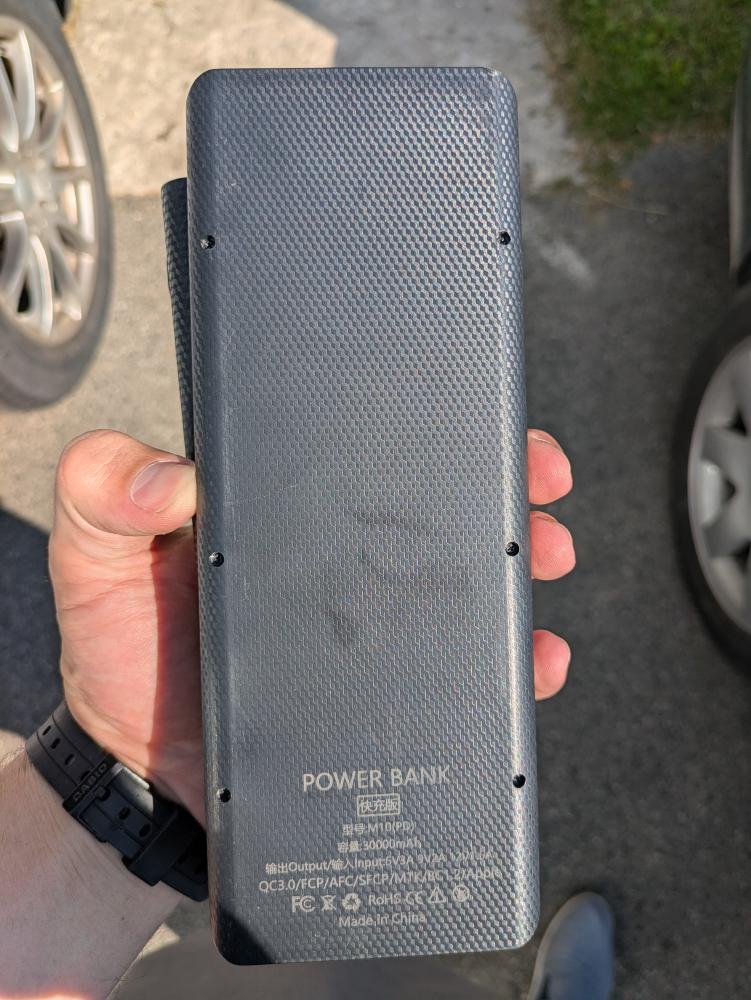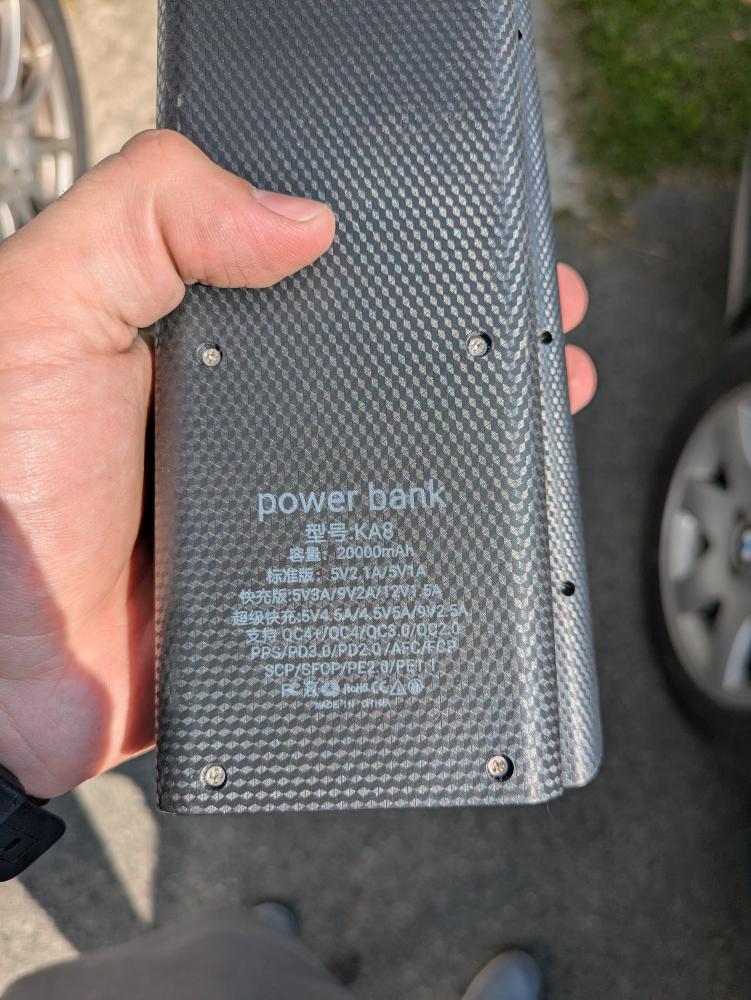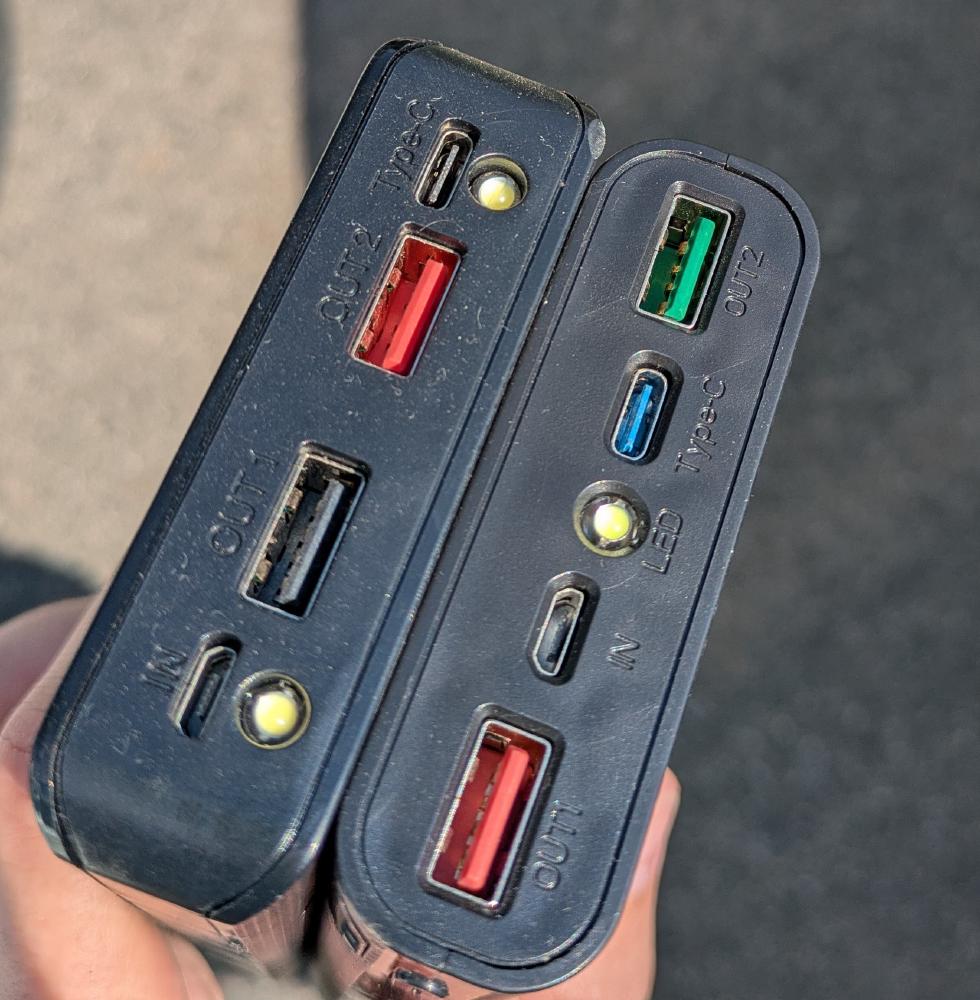Those cheap AliExpress 18650 Li-ion cell power bank enclosures suck, actually

I had a few old ThinkPad batteries lying around. They were big, bulky and not holding much of a charge. Inside those were standard 18650 Li-ion battery cells.
I have two TOMO M4 power banks around, and they are fantastic for reusing these old 18650 battery cells inside them. You can even mix and match cells without a worry because they are individually addressed, meaning that any issues with battery charge levels and voltages differing between cells are not a concern. Unfortunately the TOMO M4 lacks modern features, such as USB-C ports and USB-C PD outputs at higher voltages and currents, which makes it less useful and convenient in 2025. I haven’t found any newer designs from them as well that are just as cool.
I still wanted to reuse those 18650 cells, so I went to AliExpress and bought some 18650 battery enclosures for testing. One holds 8 cells, another one 10 cells, and the largest one could fit 20 cells inside it.



Unfortunately, they all suck and are likely a huge fire hazard in the wrong hands.
For the 8-cell variant, I used newly bought 18650 Li-ion cells that were charged up to the same level. This battery enclosure worked quite well, until it didn’t. For whatever reason, the enclosure could not charge itself and other devices at the same time.
With the 10-cell variant, I used two different batches of used 18650 Li-ion cells from old ThinkPad batteries, charging them up first. That one worked fine, until it also failed in weird ways. It got quite hot during charging/discharging cycles, and eventually the segment display that’s responsible for displaying the charge level stopped showing certain segments. At that point I lost trust in that enclosure, too.
I had the most fun with the 20-cell battery enclosure. My first fuck-up involved using two old battery cells with different charge levels, which resulted in some magic smoke coming out of the PCB of the enclosure itself. Somehow that didn’t break the battery bank enclosure, so I crammed 20 charged up used and mixed 18650 Li-ion cells in it and started charging and discharging it. The batteries got quite hot, likely around 50-70°C based on the temperature readings of my hand.1 At that point I realized I was playing with fire and stopped.
The USB-C PD behaviour was different on all power banks. Some were fine with powering a ThinkPad laptop with the appropriate cable, some were flaky with setting the power levels, and some were just useless with certain cable or device combinations.
The battery banks rely on a very simple arrangement: the 18650 Li-ion cells are connected in parallel, and the resulting 3.7-4.2V is then boosted up for the appropriate voltage on the control board. This carries risks: if you insert two or more Li-ion cells with different voltages, then one will start charging the others to bring the cells to the same voltage, and that can become uncontrolled and result in a cell overheating and/or exploding. It’s also a horrible idea to mix and match used cells of different capacities and wear levels as they will charge and discharge at different rates.
In my experience, a cheap DIY power bank enclosure also carries the risk of attracting attention at an airport security check. After learning how bad these can be, that is an entirely justified suspicion.
I ended up throwing all the battery bank enclosures out, the hardware failures and issues made me too concerned about one of these starting a fire. I like controlled fires, but the uncontrolled ones are really not my cup of tea.
If you know of a 18650 Li-ion cell battery bank enclosure that works like the TOMO M4 but has modern features (USB-C port, USB-PD, can charge laptops etc.) then please do reach out to me as I’d love to test one out. You can find the contact details below the post.
-
50-55°C feels very hot to the touch, so it’s a good rule of thumb (no pun intended) for determining the minimum temperature of a hot surface by hand. Disclaimer: not physics advice. ↩︎
Subscribe to new posts via the RSS feed.
Not sure what RSS is, or how to get started? Check this guide!
You can reach me via e-mail or LinkedIn.
If you liked this post, consider sharing it!